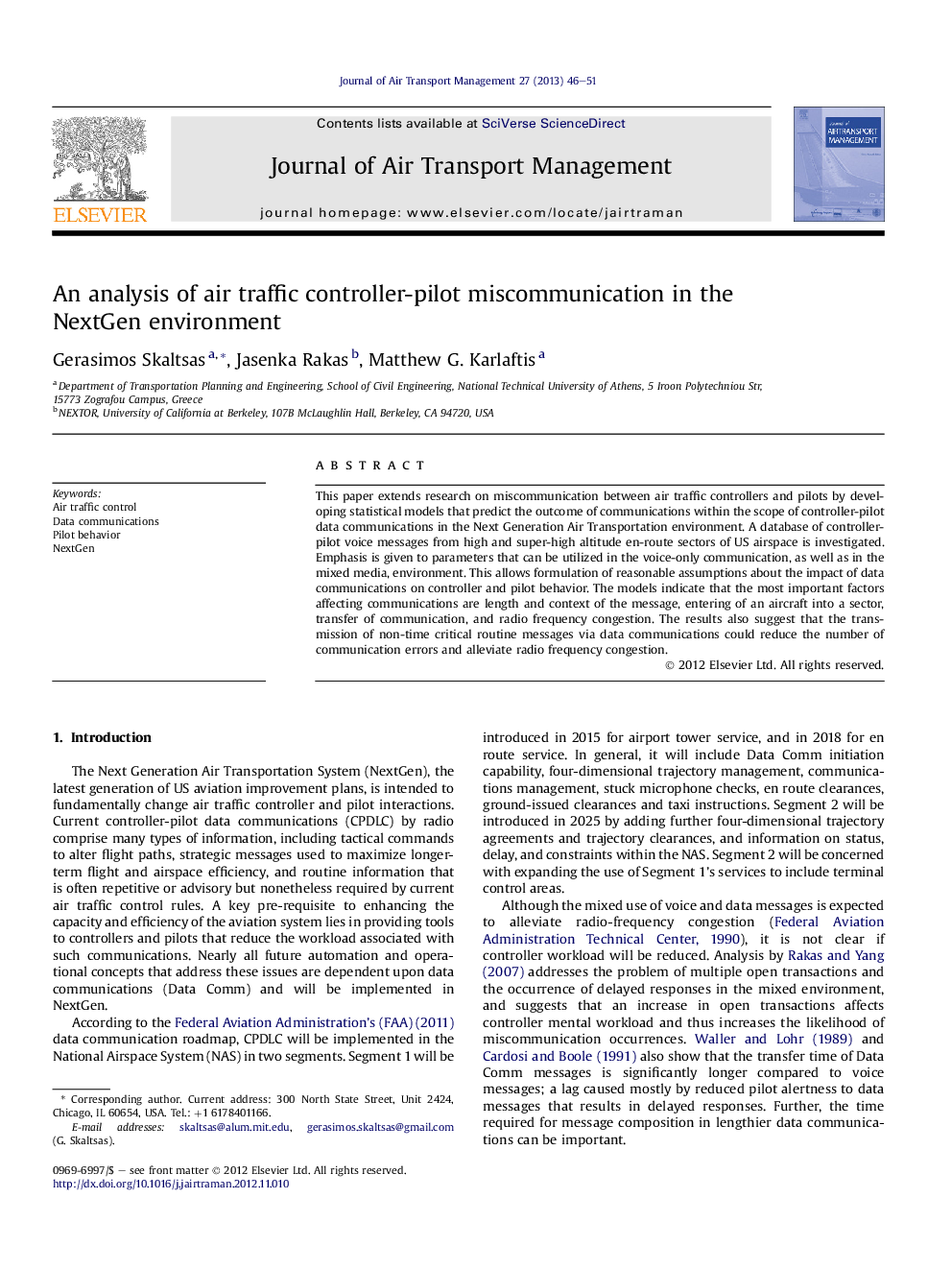| Article ID | Journal | Published Year | Pages | File Type |
|---|---|---|---|---|
| 1030978 | Journal of Air Transport Management | 2013 | 6 Pages |
This paper extends research on miscommunication between air traffic controllers and pilots by developing statistical models that predict the outcome of communications within the scope of controller-pilot data communications in the Next Generation Air Transportation environment. A database of controller-pilot voice messages from high and super-high altitude en-route sectors of US airspace is investigated. Emphasis is given to parameters that can be utilized in the voice-only communication, as well as in the mixed media, environment. This allows formulation of reasonable assumptions about the impact of data communications on controller and pilot behavior. The models indicate that the most important factors affecting communications are length and context of the message, entering of an aircraft into a sector, transfer of communication, and radio frequency congestion. The results also suggest that the transmission of non-time critical routine messages via data communications could reduce the number of communication errors and alleviate radio frequency congestion.
► Logistic and hierarchical tree-based regression analysis are used to examine air traffic controller-pilot miscommunications. ► Communication management messages are more likely to result in miscommunications. ► Lengthy messages and high voice channel occupancy increase the error potential.
